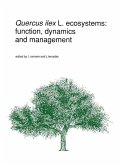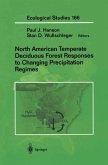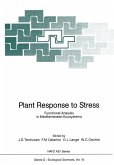Allelochemicals play a great role in managed and natural ecosystems. Apart from plant growth, allelochemicals also may influence nutrient dynamics, mycorrhizae, soil chemical characteristics, and microbial ecology. Synergistic action of various factors may better explain plant growth and distribution in natural systems. The book emphasizes the role of allelochemicals in shaping the structure of plant communities in a broader ecological perspective. Readers will gain a unique perspective on plant allelochemicals research by a multifaceted approach to understand the role of these compounds.
The book addresses the following questions: (1) How do allelochemicals influence different components of the ecosystem in terms of shaping community structure? (2) Why is it difficult to demonstrate interference by allelochemicals (i.e., allelopathy) in a natural system in its entirety? Despite a large amount of existing literature on allelopathy, why are ecologists still skeptical about the existence of allelopathy in nature? (3) Why are there only scarce data on aquatic ecosystems? (4) What role do allelochemicals play in microbial ecology? How does altered soil microbial ecology influence community structure and fate of allelochemicals? (5) What role do allelochemicals play in nutrient dynamics in terms of final influence on plant growth and distribution? (6) How do abiotic and biotic factors of an ecosystem influence the functioning of allelochemicals? (7) What are the main pitfalls in presentation, analysis, and interpretation of allelochemical data?
There is a growing appreciation that population- and ecosystem-based approaches complement each other strongly, and in view of this the concept of allelopathy is now applied effectively to address ecosystem-level questions. The objective of this volume is to discuss the questions above to find out the effect of allelochemicals on structure and function of the ecosystem. Readers will gain a unique perspective onplant allelochemical research through a multifaceted approach to understanding the role of these compounds.
The book addresses the following questions: (1) How do allelochemicals influence different components of the ecosystem in terms of shaping community structure? (2) Why is it difficult to demonstrate interference by allelochemicals (i.e., allelopathy) in a natural system in its entirety? Despite a large amount of existing literature on allelopathy, why are ecologists still skeptical about the existence of allelopathy in nature? (3) Why are there only scarce data on aquatic ecosystems? (4) What role do allelochemicals play in microbial ecology? How does altered soil microbial ecology influence community structure and fate of allelochemicals? (5) What role do allelochemicals play in nutrient dynamics in terms of final influence on plant growth and distribution? (6) How do abiotic and biotic factors of an ecosystem influence the functioning of allelochemicals? (7) What are the main pitfalls in presentation, analysis, and interpretation of allelochemical data?
There is a growing appreciation that population- and ecosystem-based approaches complement each other strongly, and in view of this the concept of allelopathy is now applied effectively to address ecosystem-level questions. The objective of this volume is to discuss the questions above to find out the effect of allelochemicals on structure and function of the ecosystem. Readers will gain a unique perspective onplant allelochemical research through a multifaceted approach to understanding the role of these compounds.
Dieser Download kann aus rechtlichen Gründen nur mit Rechnungsadresse in A, B, BG, CY, CZ, D, DK, EW, E, FIN, F, GR, HR, H, IRL, I, LT, L, LR, M, NL, PL, P, R, S, SLO, SK ausgeliefert werden.









